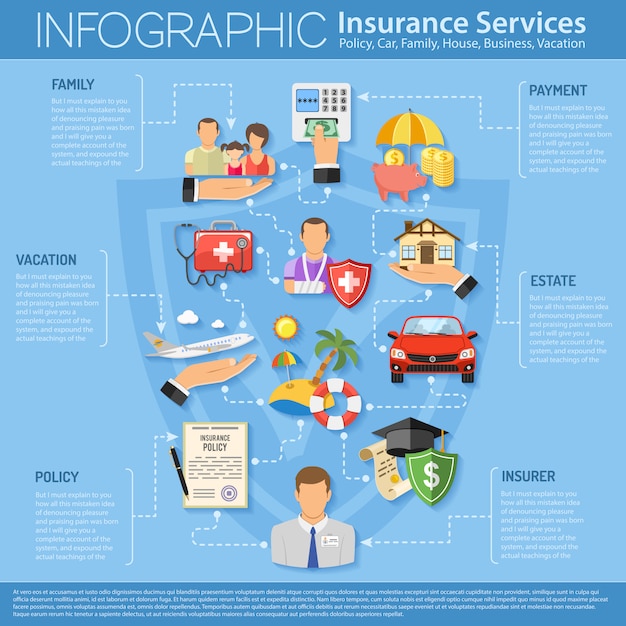Employee Benefits Communication: Best Practices for Engagement

Effective employee benefits communication is crucial for maximizing engagement and ensuring employees understand and value the benefits offered, leading to improved satisfaction and retention.
Navigating the complexities of employee benefits can be challenging for both employers and employees. However, effective employee benefits communication: best practices for increased engagement, ensures that employees understand the value of their benefits package, leading to higher satisfaction and improved retention rates.
Why Effective Benefits Communication Matters
Effective benefits communication is more than just informing employees about their options; it’s about creating a culture of understanding and appreciation. When employees understand their benefits, they are more likely to utilize them, leading to healthier and more productive lives.
Moreover, clear and consistent communication fosters trust between employees and employers. It shows that the company cares about its employees’ well-being and is invested in their long-term success.
Improved Employee Satisfaction
One of the primary benefits of effective communication is improved employee satisfaction. When employees feel informed and valued, they are more likely to be satisfied with their jobs and the company they work for.
Increased Benefits Utilization
Many employees don’t fully understand or utilize their benefits packages. Clear communication helps them understand what’s available and how to access it, leading to greater utilization.
- Highlighting the value of each benefit through clear and concise messaging.
- Offering multiple channels for employees to access information, such as email, intranet, and in-person meetings.
- Providing personalized communication to address individual employee needs and concerns.
Ultimately, effective benefits communication is an investment in your employees’ well-being and your company’s success. By prioritizing clear, consistent, and engaging communication, you can create a workplace where employees feel valued, supported, and empowered to make the most of their benefits.
Understanding Your Audience
Knowing your audience is the first step to crafting effective benefits communication. Different employees have different needs and preferences, so it’s essential to tailor your communication to your specific workforce.
Consider factors such as age, demographics, and technological proficiency when developing your communication strategy. This will help you choose the most effective channels and messaging for your employees.

Segmenting Your Workforce
Segmenting your workforce allows you to tailor your communication to different groups of employees. This ensures that each employee receives the information that is most relevant to them.
Gathering Employee Feedback
Regularly gather feedback from employees to understand their communication preferences and identify any gaps in your current strategy. This can be done through surveys, focus groups, or one-on-one meetings.
- Conducting regular employee surveys to assess satisfaction with benefits communication.
- Holding focus groups to gather in-depth feedback on specific benefits programs.
- Encouraging employees to provide feedback through anonymous channels, such as suggestion boxes.
By understanding your audience and tailoring your communication to their needs, you can create a more engaging and effective benefits communication strategy. This will lead to improved employee satisfaction, increased benefits utilization, and a stronger company culture.
Choosing the Right Communication Channels
The right communication channels are essential for reaching your employees effectively. Consider a mix of digital and traditional channels to ensure that all employees have access to the information they need.
Digital channels such as email, intranet, and mobile apps are great for delivering timely information and providing easy access to resources. Traditional channels like printed materials and in-person meetings can be effective for complex or sensitive topics.
Digital Platforms
Digital platforms offer a convenient and cost-effective way to communicate with employees. They allow you to deliver information quickly and easily, and they can be accessed from anywhere with an internet connection.
Traditional Methods
While digital channels are important, traditional methods still have a place in benefits communication. Printed materials and in-person meetings can be effective for reaching employees who may not have access to digital channels or who prefer more personal interaction.
- Hosting town hall meetings or webinars to discuss benefits changes or new programs.
- Creating visually appealing posters and flyers to promote benefits enrollment and awareness.
- Offering one-on-one consultations with HR representatives to answer employee questions.
By carefully selecting the right communication channels for your workforce, you can ensure that all employees receive the information they need in a way that is convenient and engaging. This will lead to improved understanding, increased utilization, and greater satisfaction with your benefits program.
Crafting Clear and Concise Messaging
Clear and concise messaging is essential for ensuring that employees understand their benefits. Avoid jargon and technical terms, and use plain language that is easy to understand.
Focus on the benefits of each program and how it can help employees achieve their personal and professional goals. Use visuals, such as infographics and videos, to make your communication more engaging and memorable.

Simplifying Complex Information
Benefits information can be complex and overwhelming. Break down complex topics into smaller, more manageable pieces, and use visuals to illustrate key concepts.
Highlighting the Value Proposition
Emphasize the value of each benefit and how it can help employees achieve their goals. Use testimonials from employees who have successfully utilized the program to build trust and credibility.
- Using storytelling to illustrate the impact of benefits on employees’ lives.
- Creating short, engaging videos that explain key benefits concepts.
- Offering interactive tools, such as benefits calculators, to help employees make informed decisions.
By crafting clear and concise messaging, you can help employees understand the value of their benefits and make informed decisions about their healthcare, retirement, and other important aspects of their lives. This will lead to improved satisfaction, increased utilization, and a stronger company culture.
Using Visuals to Enhance Communication
Visuals can be a powerful tool for enhancing benefits communication. They can help you capture employees’ attention, simplify complex information, and make your communication more memorable.
Use a variety of visuals, such as infographics, videos, and images, to illustrate key concepts and highlight the benefits of your programs. Make sure your visuals are visually appealing and consistent with your company’s branding.
Infographics
Infographics can be used to present complex data and information in a visually appealing and easy-to-understand format. They are great for highlighting key statistics, comparing different options, and illustrating the benefits of your programs.
Videos
Videos are a great way to engage employees and deliver information in a dynamic and memorable format. Use videos to explain complex concepts, share employee testimonials, and promote upcoming events.
- Creating animated videos to explain complex benefits topics.
- Using whiteboard animation to engage employees and simplify information.
- Featuring real employees in video testimonials to build trust and credibility.
By incorporating visuals into your benefits communication strategy, you can capture employees’ attention, simplify complex information, and make your communication more engaging and memorable. This will lead to improved understanding, increased utilization, and greater satisfaction with your benefits program.
Measuring Communication Effectiveness
Measuring the effectiveness of your benefits communication is essential for ensuring that your efforts are paying off. Track key metrics such as employee satisfaction, benefits utilization, and participation rates to assess the impact of your communication strategy.
Use surveys, focus groups, and data analysis to gather insights and identify areas for improvement. Regularly review and refine your communication strategy based on your findings to ensure that it remains effective and engaging.
Tracking Key Metrics
Track key metrics such as employee satisfaction, benefits utilization, and participation rates to assess the impact of your communication strategy. This will help you understand what’s working and what’s not.
Analyzing Employee Feedback
Analyze employee feedback from surveys, focus groups, and other channels to identify areas for improvement. Use this feedback to refine your communication strategy and make it more effective.
- Conducting A/B testing on different communication channels and messages.
- Using analytics to track website traffic and engagement with online resources.
- Monitoring social media to identify employee sentiment and feedback.
By measuring the effectiveness of your benefits communication and continuously refining your strategy based on data and feedback, you can ensure that your efforts are paying off. This will lead to improved employee satisfaction, increased benefits utilization, and a stronger company culture.
| Key Point | Brief Description |
|---|---|
| 📢 Clear Messaging | Use plain language to explain benefits clearly. |
| 📊 Visual Aids | Employ infographics and videos. |
| 👂 Employee Feedback | Regularly gather employee feedback. |
| 📱 Digital Channels | Leverage email and intranet for updates. |
FAQ
▼
Benefits communication ensures employees understand their offerings, leading to higher satisfaction and better utilization. Informed employees appreciate their benefits’ value, boosting retention and morale.
▼
Key elements include clear messaging, diverse communication channels, and visuals. Tailoring information enhances understanding, and gathering feedback ensures continuous improvement of the benefits program.
▼
Communicate benefits information regularly, not just during enrollment. Updates, reminders, and success stories should be shared throughout the year to keep employees engaged.
▼
Technology enables efficient benefits communication through email, portals, and apps. These tools provide easy access to information and personalized recommendations to support employee decisions effectively.
▼
Measure success by tracking metrics like benefits utilization, employee satisfaction, and participation rates. Surveys and feedback sessions help refine strategies to ensure continuous improvement.
Conclusion
Investing in effective employee benefits communication: best practices for increased engagement, is paramount for fostering a satisfied and productive workforce. By tailoring communication to employee needs and utilizing various channels, organizations can ensure their benefits packages are understood, valued, and fully utilized, ultimately contributing to a stronger company culture and improved employee retention.





